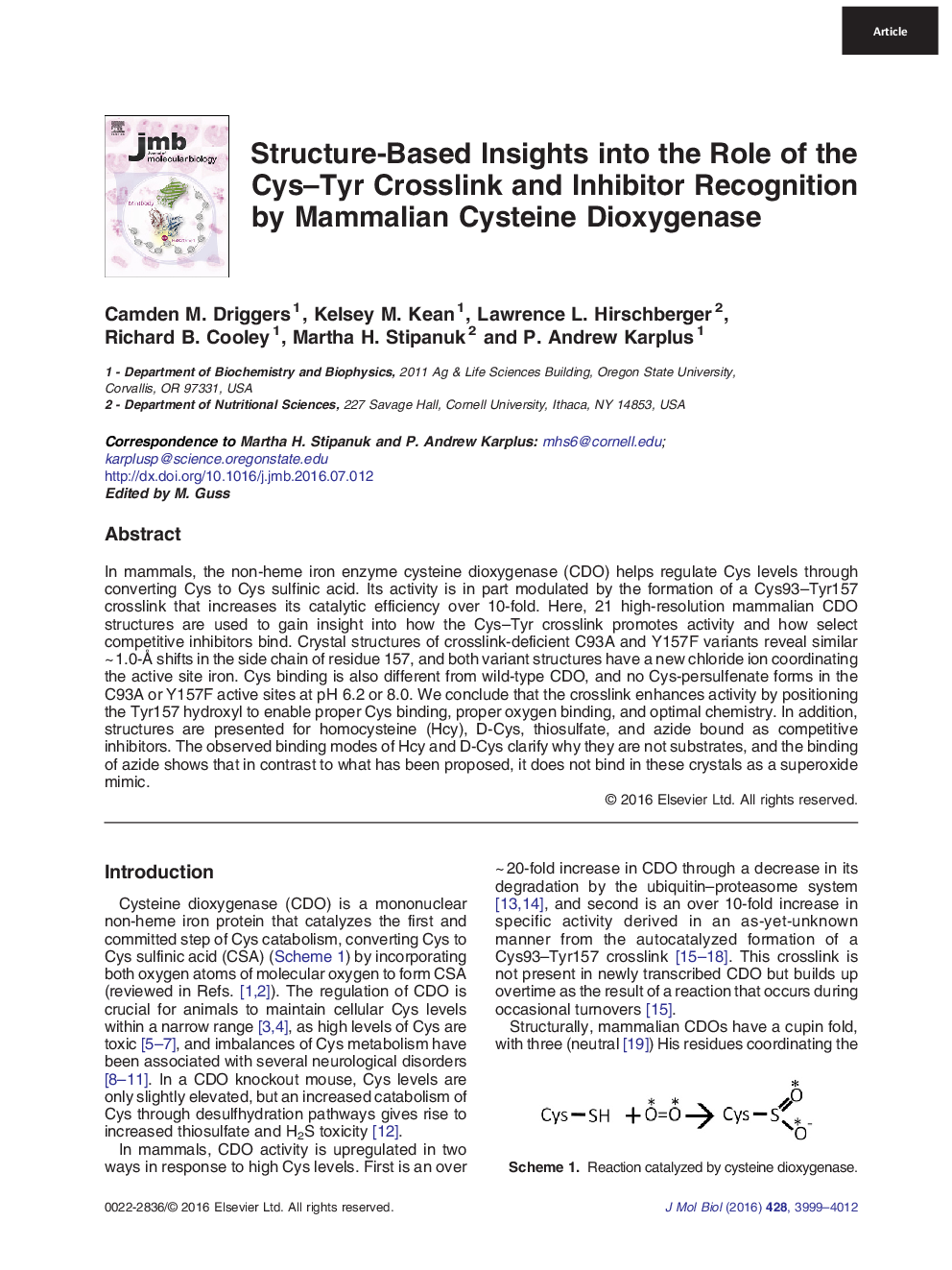| کد مقاله | کد نشریه | سال انتشار | مقاله انگلیسی | نسخه تمام متن |
|---|---|---|---|---|
| 5533378 | 1402121 | 2016 | 14 صفحه PDF | دانلود رایگان |

- In mammalian CDO, the Cys-Tyr crosslink formation properly positions the Tyr-OH.
- Proper Tyr-OH position guides Cys binding and aligns Ser-His-Tyr catalytic triad.
- Homocysteine and D-Cys binding modes clarify why they are not substrates.
- Azide does not bind as a superoxide mimic.
- Diverse high-accuracy CDO structures can ground future simulations and experiments.
In mammals, the non-heme iron enzyme cysteine dioxygenase (CDO) helps regulate Cys levels through converting Cys to Cys sulfinic acid. Its activity is in part modulated by the formation of a Cys93-Tyr157 crosslink that increases its catalytic efficiency over 10-fold. Here, 21 high-resolution mammalian CDO structures are used to gain insight into how the Cys-Tyr crosslink promotes activity and how select competitive inhibitors bind. Crystal structures of crosslink-deficient C93A and Y157F variants reveal similar ~Â 1.0-Ã shifts in the side chain of residue 157, and both variant structures have a new chloride ion coordinating the active site iron. Cys binding is also different from wild-type CDO, and no Cys-persulfenate forms in the C93A or Y157F active sites at pHÂ 6.2 or 8.0. We conclude that the crosslink enhances activity by positioning the Tyr157 hydroxyl to enable proper Cys binding, proper oxygen binding, and optimal chemistry. In addition, structures are presented for homocysteine (Hcy), D-Cys, thiosulfate, and azide bound as competitive inhibitors. The observed binding modes of Hcy and D-Cys clarify why they are not substrates, and the binding of azide shows that in contrast to what has been proposed, it does not bind in these crystals as a superoxide mimic.
Graphical Abstract338
Journal: Journal of Molecular Biology - Volume 428, Issue 20, 9 October 2016, Pages 3999-4012